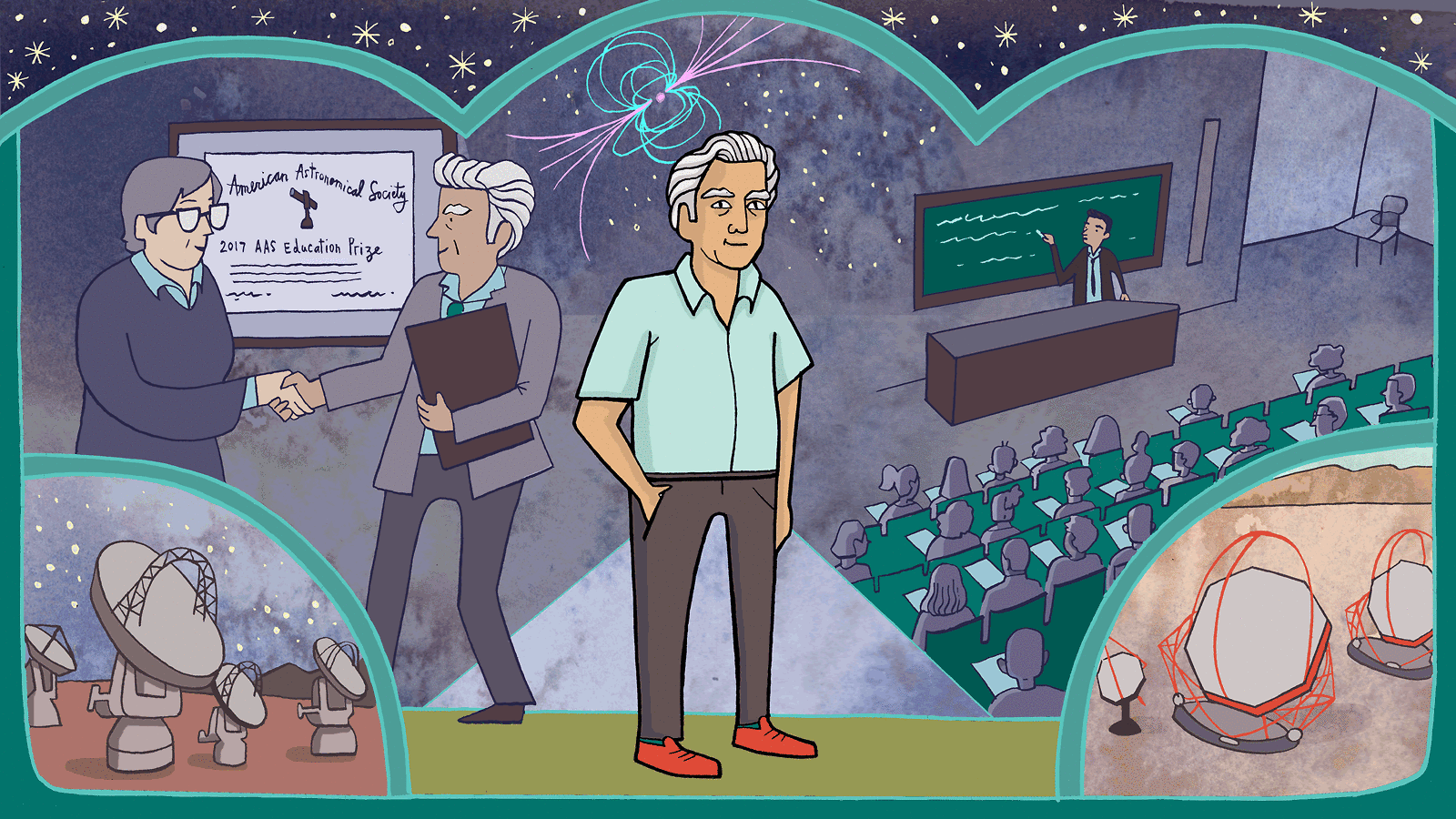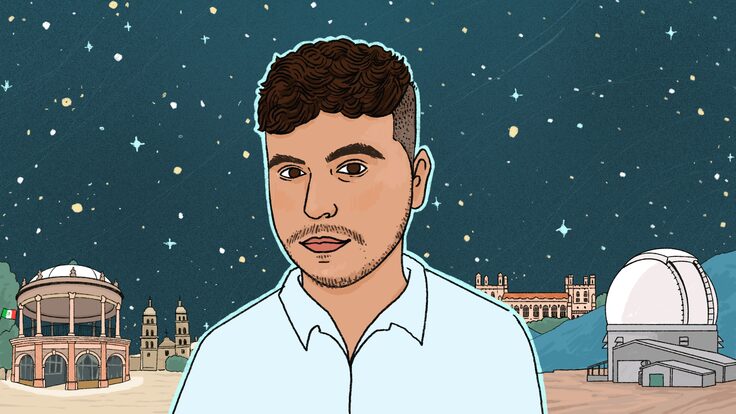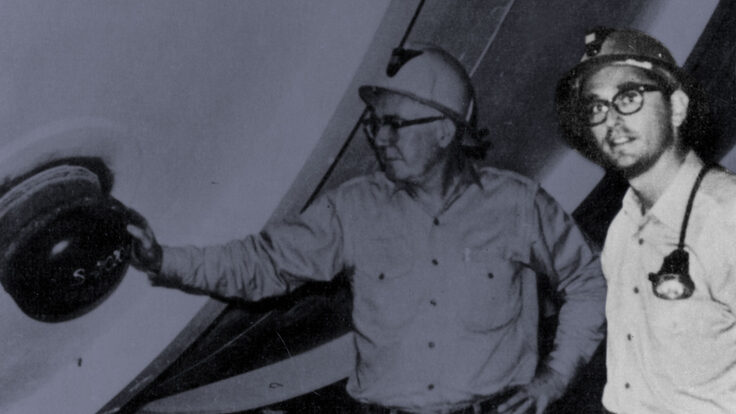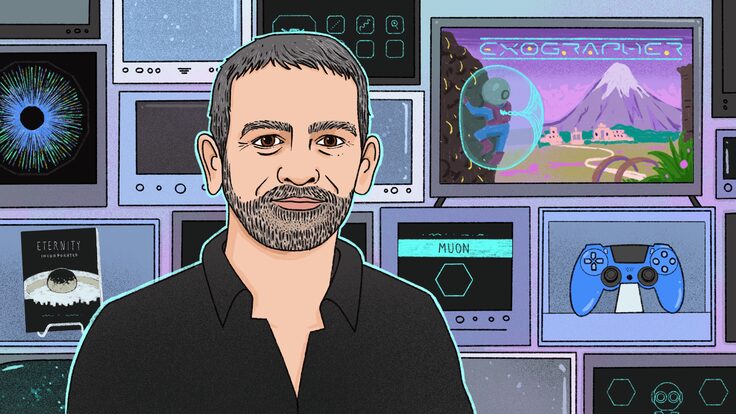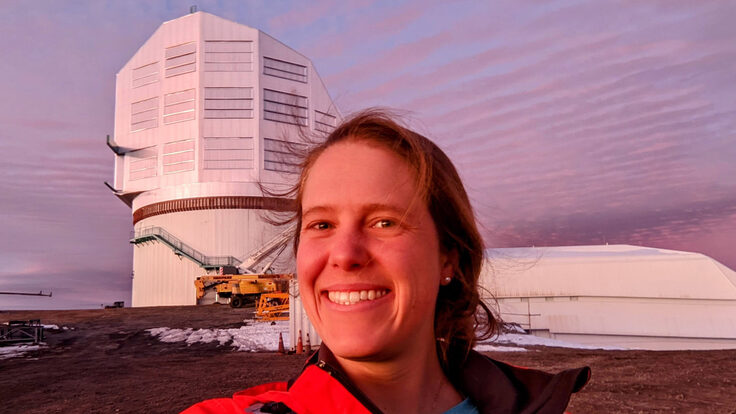Professor Hernán Quintana Godoy has a way of taking the long view, peering back into the past through distant stars while looking ahead to the future of astronomy in his home, Chile.
For three decades, Quintana has helped shape the landscape of astronomy in Chile, host to some of the largest ground-based observatories in the world.
In January he became the first recipient of the Education Prize of the American Astronomical Society from a country other than the United States or Canada.
“Training the next generation of astronomers should not be limited to just a few countries,” says Keely Finkelstein, former chair of the AAS Education Prize Committee. “[Quintana] has been a tireless advocate for establishing excellent education and research programs in Chile.”
Quintana earned his doctorate from the University of Cambridge in the United Kingdom in 1973. The same year, a military junta headed by General Augusto Pinochet took power in a coup d’état.
Quintana came home and secured a teaching position at the University of Chile. At the time, Chilean researchers mainly focused on the fundamentals of astronomy—measuring the radiation from stars and calculating the coordinates of celestial objects. By contrast, Quintana’s dissertation on high-energy phenomena seemed downright radical.
A year and a half after taking his new job, Quintana was granted a leave of absence to complete a post-doc abroad. Writing from the United States, Quintana published an article encouraging Chile to take better advantage of its existing international observatories. He urged the government to provide more funding and to create an environment that would encourage foreign-educated astronomers to return home to Chile after their postgraduate studies. The article did not go over well with the administration at his university.
“I wrote it for a magazine that was clearly against Pinochet,” Quintana says. “The magazine cover was a black page with a big ‘NO’ in red” related to an upcoming referendum.
UCh dissolved Quintana’s teaching position.
Quintana became a wandering postdoc and research associate in Europe, the US and Canada. It wasn’t until 1981 that Quintana returned to teach at the Physics Institute at Pontifical Catholic University of Chile.
He continued to push the envelope at PUC. He created elective courses on general astronomy, extragalactic astrophysics and cluster dynamics. He revived and directed a small astronomy group. He encouraged students to expand their horizons by hiring both Chilean and foreign teachers and sending students to study abroad.
“Because of him I took advantage of most of the big observatories in Chile and had an international perspective of research from the very beginning of my career,” says Amelia Ramirez, who studied with Quintana in 1983. A specialist in interacting elliptical galaxies, she is now head of Research and Development in University of La Serena.
In mid-1980s Quintana became the scriptwriter for a set of distance learning astronomy classes produced by the educational division of his university’s public TV channel, TELEDUC. He challenged his viewers to take on advanced topics—and they responded.
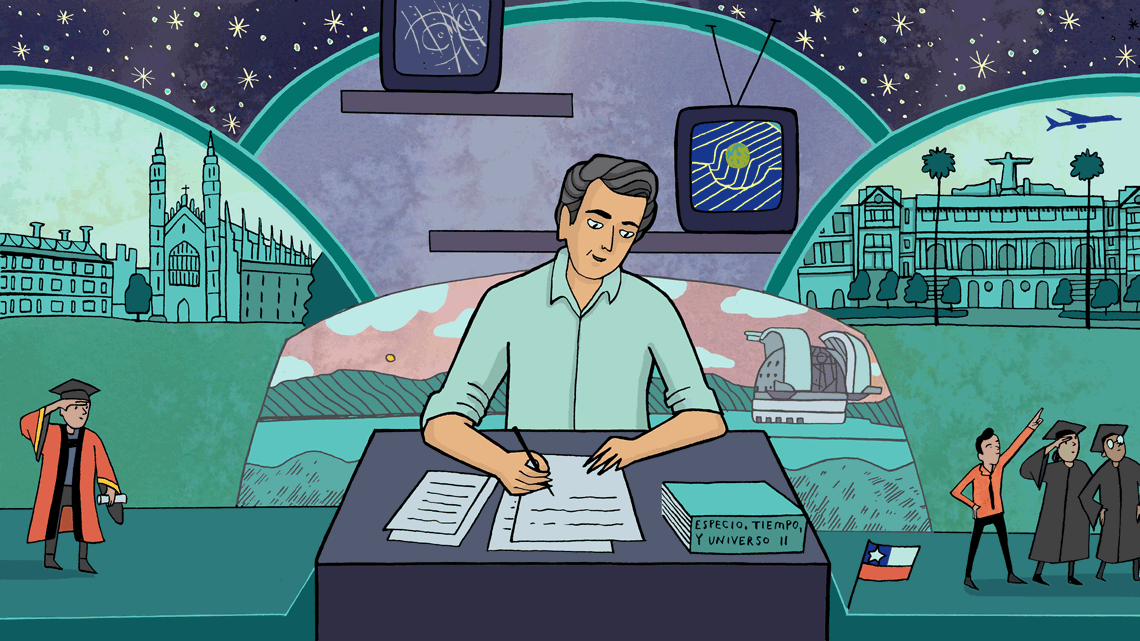
“I even introduced two episodes on relativity theory,” Quintana says. “This shocked them. The reception was so good that I wrote a whole book on the subject.”
The station partnered with universities and institutions across Chile to provide viewers the opportunity to earn a diploma by taking a written test based on the televised material. More than 5000 people enrolled during the four-year broadcasting period.
“What stands out [about Quintana] is his strategic vision and his creativity to materialize projects,” says Alejandro Clocchiatti, a professor at PUC who worked with Quintana for 20 years. “All he does is with dedication and enthusiasm, even if things don’t go according to plan. He’s got an unbeatable optimism.”
Over the years, Quintana has had a hand in planning the locations of multiple new telescopes in Chile. In 1994 he guided an expedition to identify the location of the Atacama Large Millimeter Array, a collection of 66 high-precision antennae.
In 1998, PUC finally responded to decades of advocating by Quintana and his colleagues and opened a new major in astronomy. Gradually more universities followed suit.
Quintana retired three years ago. He is optimistic about the future of Chilean astronomy. It has grown from a collection of 25 professors and their students in the late ’90s to a community of more than 800 hundred students, teachers and researchers.
He says he is looking out for new discoveries forthcoming instruments will bring. The European Extremely Large Telescope, under construction on Cerro Armazones in the Atacama Desert of northern Chile, is expected to produce images 16 times sharper than Hubble’s. The southern facilities of the Cherenkov Telescope Array, a planned collection of 99 telescopes in Chile, will complement a northern array to complete the world’s most sensitive high-energy gamma-ray observatory. Both arrangements will peer into super-massive black holes, the atmospheres of extra-solar planets, and the origin of relativistic cosmic particles.
“Everything in our universe is constantly changing,” Quintana says. “We are all heirs of that structural evolution.”



